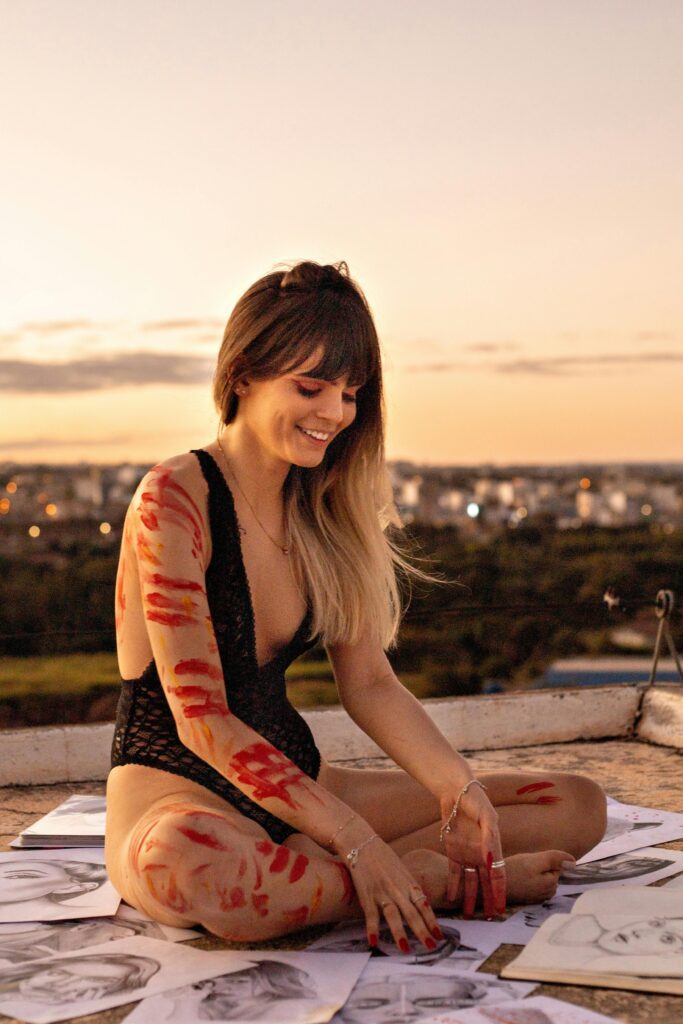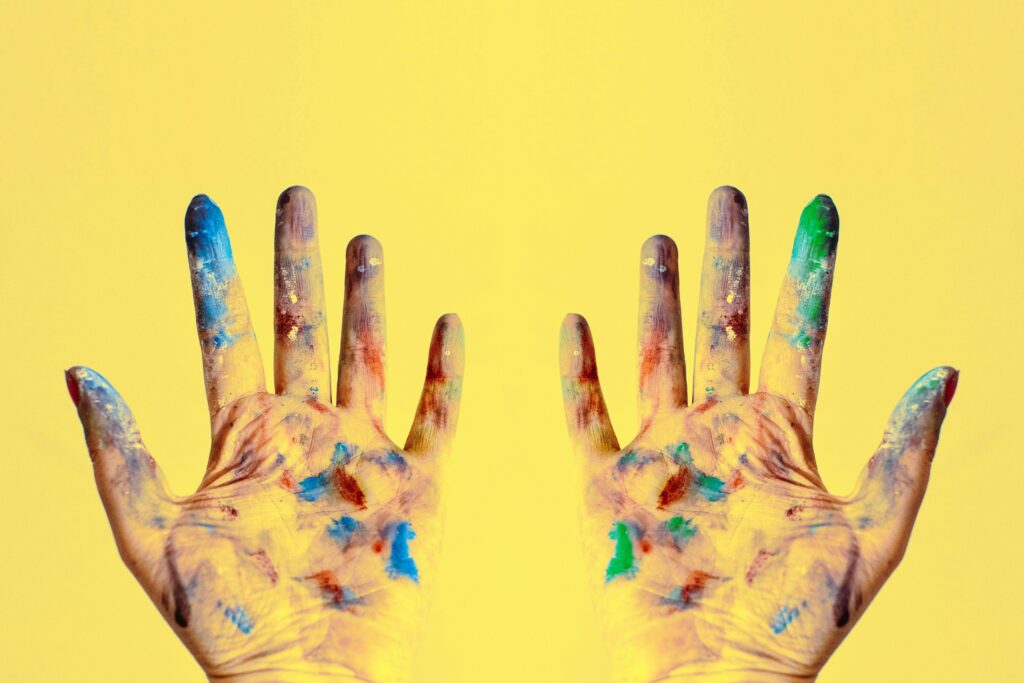Unlock the secrets to overcoming art block with our actionable 5-step guide. Learn to navigate creative hurdles with ease, find inspiration in fresh experiences, and connect with a community of artists. This empowering resource is designed to help you reclaim your artistic flow and spark a colorful resurgence of creativity. Perfect for artists seeking to break free from the stagnation and rediscover their passion for art.
Introduction
Every artist, at some juncture in their creative voyage, encounters a formidable adversary known as “art block.” It’s a state of creative standstill, where the muse seems to have vanished without a trace, leaving behind a canvas as blank as the mind. Art block can manifest as a daunting wall between the artist and their potential masterpiece, a barrier where inspiration should be. It’s not just painters or sculptors who face this impasse; writers, musicians, designers—creatives across all mediums are well-acquainted with this pause in productivity and flow.
The occurrence of art block is as common as it is challenging. It is a shared struggle within the creative community, often whispered about in studio corners or lamented in online forums. But despite its prevalence, many creators find themselves at a loss for how to navigate this creative quagmire. The good news is, art block is not a dead end. It is a temporary detour, one that countless creatives have successfully navigated and left behind.
In the pursuit of unblocking the block, this article presents a sequence of five simple and actionable steps that aim to pave a clear path back to creativity. From acknowledging the presence of art block to connecting with fellow artists for support, these strategies are distilled wisdom from the artistic trenches. They are practical, they are approachable, and they may just be the keys to unlocking your boundless creativity once more. So, let’s embark on this journey together and explore how to get past art block in 5 simple steps.
Five Proven Steps to Overcome Art Block
Step 1: Acknowledge and Accept Your Art Block
The first stride towards conquering art block is recognizing its existence. It’s about confronting the silent elephant in the room—that invisible force halting your creative engines. Acknowledgment is power. By admitting to yourself that you’re facing a creative drought, you shift from a place of passive stuckness to active awareness. This acknowledgment is the foundation upon which you can start to build your bridge over the block.
Acceptance follows acknowledgment. This isn’t about waving a white flag to artistic defeat; rather, it’s about lowering your internal resistance to the situation. Accept that art block is a natural part of the creative process. Much like the seasons change, your creativity ebbs and flows. By accepting this, you reduce the self-imposed pressure that often exacerbates the block, allowing yourself the space and grace to not be in constant creation mode.

One practical way to facilitate this acceptance is through journaling. Pour your thoughts onto paper. Write about what you’re feeling, your frustrations, fears, and all that seems to block your way. This act of externalization creates a dialogue with your creative self. It transforms abstract anxieties into concrete words that can be managed and maneuvered. If journaling isn’t your preferred outlet, talk it out with a trusted friend, a fellow artist, or even a voice recorder. The key is to externalize the block so it doesn’t weigh heavy on your spirit.
Acknowledging and accepting your art block doesn’t give it power over you; instead, it gives you power over it. It’s the crucial first step in your journey back to creativity—a journey that continues with the next transformative step.
Step 2: Change Your Creative Environment
The spaces around us can be powerful allies in our quest for creativity. They hold the keys to unseen vaults of inspiration and can catalyze the mind into action. Changing your scenery is akin to taking a fresh breath of air—it can invigorate your senses and awaken dormant ideas. When the usual surroundings become too familiar, a new environment can challenge your perceptions and fuel creative thought.
Consider revamping your workspace as a first step. This doesn’t necessarily mean a complete overhaul; subtle shifts can make a significant impact. Rotate your desk to face a different direction, introduce a plant or two for a touch of nature, or declutter to create a clean slate for your thoughts. The arrangement of your creative haven can profoundly influence your mental clarity and willingness to create.

If you’re feeling particularly stifled, step outside the confines of your usual creative confines. This could mean setting up shop in a bustling café, a serene park, or even a different room in your home. The key is to find a space that contrasts with your current one. If your usual space is quiet and isolated, seek out somewhere with a bit more life. Conversely, if you’re typically surrounded by chaos, find solace in a place of calm.
When considering the impact of a minimalist versus a vibrant workspace, reflect on your personal triggers for creativity. Some find that a minimalist environment—free of distractions and clutter—sets the stage for clear, focused creative work. For others, a vibrant space decorated with art, colors, and textures can be immensely stimulating and encourage a more playful and exploratory mindset.
Experiment with different settings to discover what ignites your creative spark. Remember that the environment is not just a backdrop for your work; it’s a dynamic participant in the creative process. By stepping into a new scene, you might just find that your creativity steps up to meet you there.
Step 4: Set Small, Achievable Goals
When faced with art block, the very idea of completing a project can feel overwhelming. A blank canvas looms large, a new chapter seems insurmountable, and every note appears out of reach. The antidote? Set small, achievable goals. This approach transforms a daunting mountain into manageable hills, each one an individual victory on the path to creative recovery.
Begin by dissecting your larger projects into bite-sized tasks. If you’re working on a painting, start by sketching small sections. Writers can break a story into paragraphs or even sentences. Musicians can focus on mastering a few measures at a time. These micro-goals should be clear and achievable within a short time frame, granting you the satisfaction of completion and the encouragement to continue.
Pair these tasks with simple, time-bound objectives. For instance, commit to sketching for just 20 minutes a day or writing 200 words each morning. These goals are less about the final product and more about building momentum. As you meet these small objectives, you’ll find the pressure easing, and often, the flow of creativity naturally follows.
Consistency and routine are the nurturing ground for creativity. They foster a disciplined approach to art, which paradoxically, frees your creative spirit. A daily habit, even one that is seemingly minor, compounds over time into significant progress. It’s the steady drip that can erode the stone of art block, allowing new ideas to bubble to the surface.
Remember, the aim is not to burden yourself with a stringent regimen, but to find a rhythm that gently coaxes your creativity out of hiding. Celebrate each small accomplishment along the way—these are the steps that together will traverse the distance from block to breakthrough.
Step 5: Connect with Other Artists
The journey through art block is not one you have to undertake alone. There is immense power in the artistic community—a collective force that can buoy you through the tides of creative stagnation. Sharing experiences with fellow creators can be both a balm and a catalyst, providing comfort and sparking new ideas.
Communities, both online and offline, offer rich soil for cross-pollinating creativity. Art forums and social media groups are treasure troves of dialogue, advice, and encouragement. Here, you can witness the creative struggles and successes of others, learn from their journeys, and contribute your own insights. Local art clubs and collectives extend this interaction into the physical world, offering the warmth of face-to-face encouragement and the tangible exchange of techniques and experiences.
Actively engage with these communities. Participate in discussions, ask questions, and share your works in progress—sometimes, a fresh set of eyes can offer the perspective needed to move forward. The collective wisdom of a community can often shine a light on a path that you might not have seen on your own.
Another actionable tip is to seek or offer mentorship within these communities. If you are further along in your artistic journey, offer guidance to those who might be encountering art block for the first time. If you find yourself struggling, don’t hesitate to reach out for mentorship. A mentor can provide not only technical guidance but also emotional support, helping you navigate through your current creative impasse and beyond.
Connecting with other artists helps you remember that art block is a shared experience—it does not reflect on your individual talent or potential. By building relationships within the artistic community, you lay down a support network that not only sees you through periods of art block but also enriches your overall creative life.
Conclusion: Finding Your Creative Flow Again
Navigating past art block is a journey of rediscovery, a process of re-engaging with your creative self. It’s about finding the right keys to unlock the doors that seem to have closed on your creativity. We’ve explored five simple steps designed to guide you through and beyond the barriers of art block:
- Acknowledge and Accept: Recognize the presence of art block and accept it without self-judgment, understanding that it is a natural phase in the creative cycle.
- Change Your Environment: Alter your physical surroundings to refresh your perspective and inspire your senses, helping disrupt the mental patterns associated with art block.
- Draw Inspiration from New Experiences: Break the routine to invigorate your creativity, seeking out novel experiences that can translate into fresh, artistic ideas.
- Set Small, Achievable Goals: Establish bite-sized, manageable objectives to help rebuild your creative momentum, fostering a sense of progress and accomplishment.
- Connect with Other Artists: Tap into the collective strength of the artistic community for support, shared wisdom, and the nurturing influence of mentorship.
Remember, art block, while challenging, is not an eternal winter. It’s a season that passes, and with the right approach, you can hasten its thaw. Throughout your journey, patience and persistence are your most trusted companions. There will be days when progress seems invisible, but each step you take, no matter how small, is a victory over the creative silence.
So, take heart. Creativity is not a well that runs dry but a river that changes its course. Sometimes it flows freely, and other times it meanders quietly beneath the surface, gathering strength before bursting forth in renewed vigor. With each day, you edge closer to the spring where new ideas bubble to life. Trust in the process, trust in yourself, and know that your next creative awakening is just around the bend.


Pingback: How Popular Artists Define Art Block - Planet of Disobedients